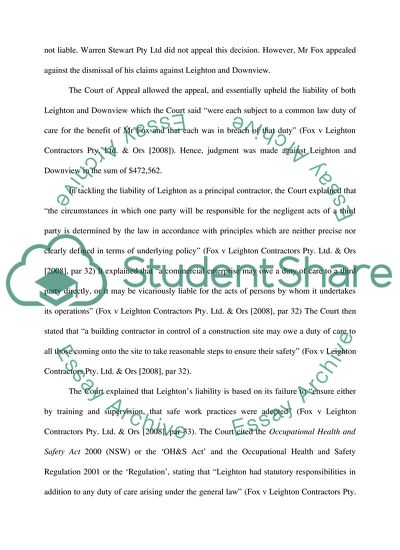Cite this document
(Leighton Contractors Pty. Ltd. v Fox and Ors Case Study, n.d.)
Leighton Contractors Pty. Ltd. v Fox and Ors Case Study. Retrieved from https://studentshare.org/law/1735734-ohs-law
Leighton Contractors Pty. Ltd. v Fox and Ors Case Study. Retrieved from https://studentshare.org/law/1735734-ohs-law
(Leighton Contractors Pty. Ltd. V Fox and Ors Case Study)
Leighton Contractors Pty. Ltd. V Fox and Ors Case Study. https://studentshare.org/law/1735734-ohs-law.
Leighton Contractors Pty. Ltd. V Fox and Ors Case Study. https://studentshare.org/law/1735734-ohs-law.
“Leighton Contractors Pty. Ltd. V Fox and Ors Case Study”, n.d. https://studentshare.org/law/1735734-ohs-law.


